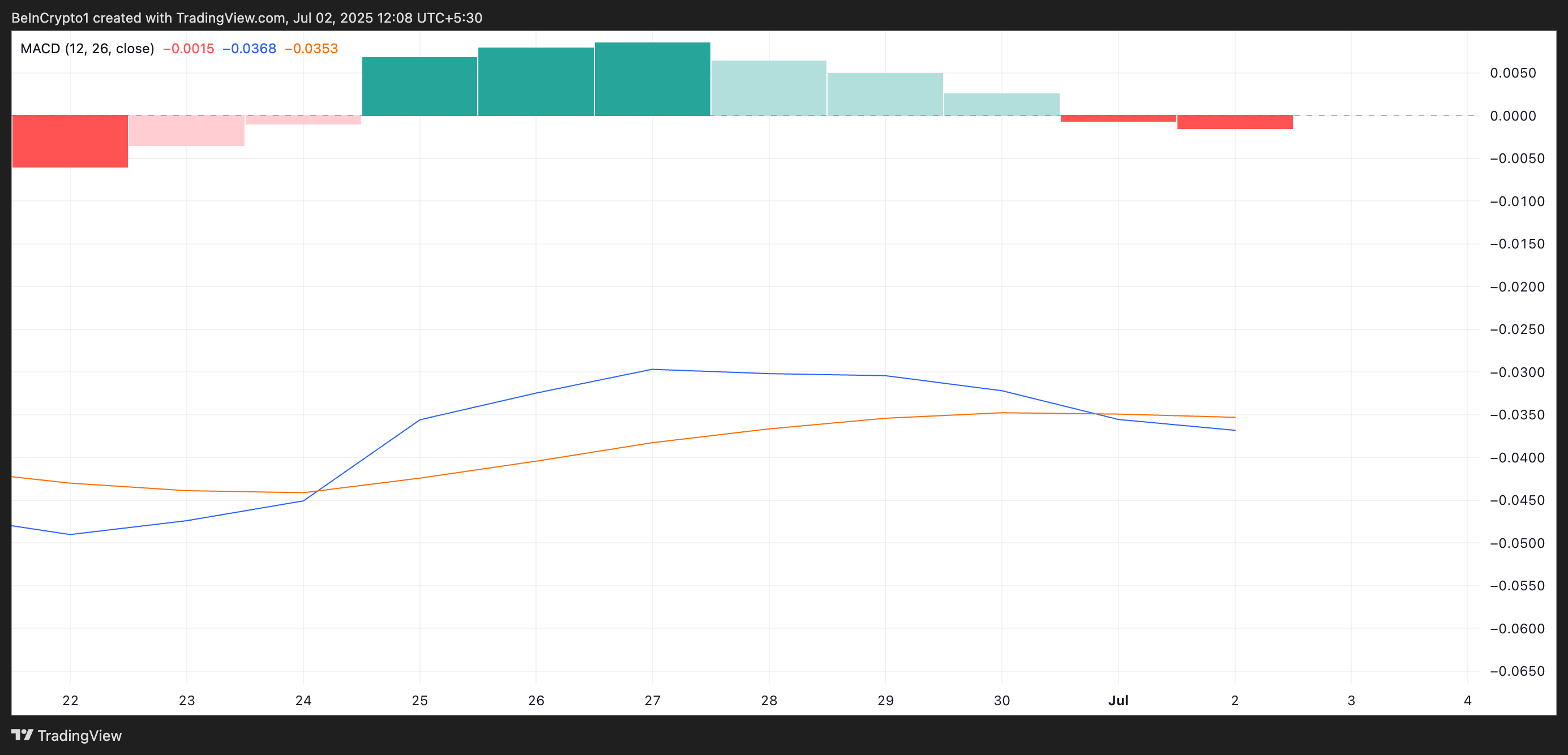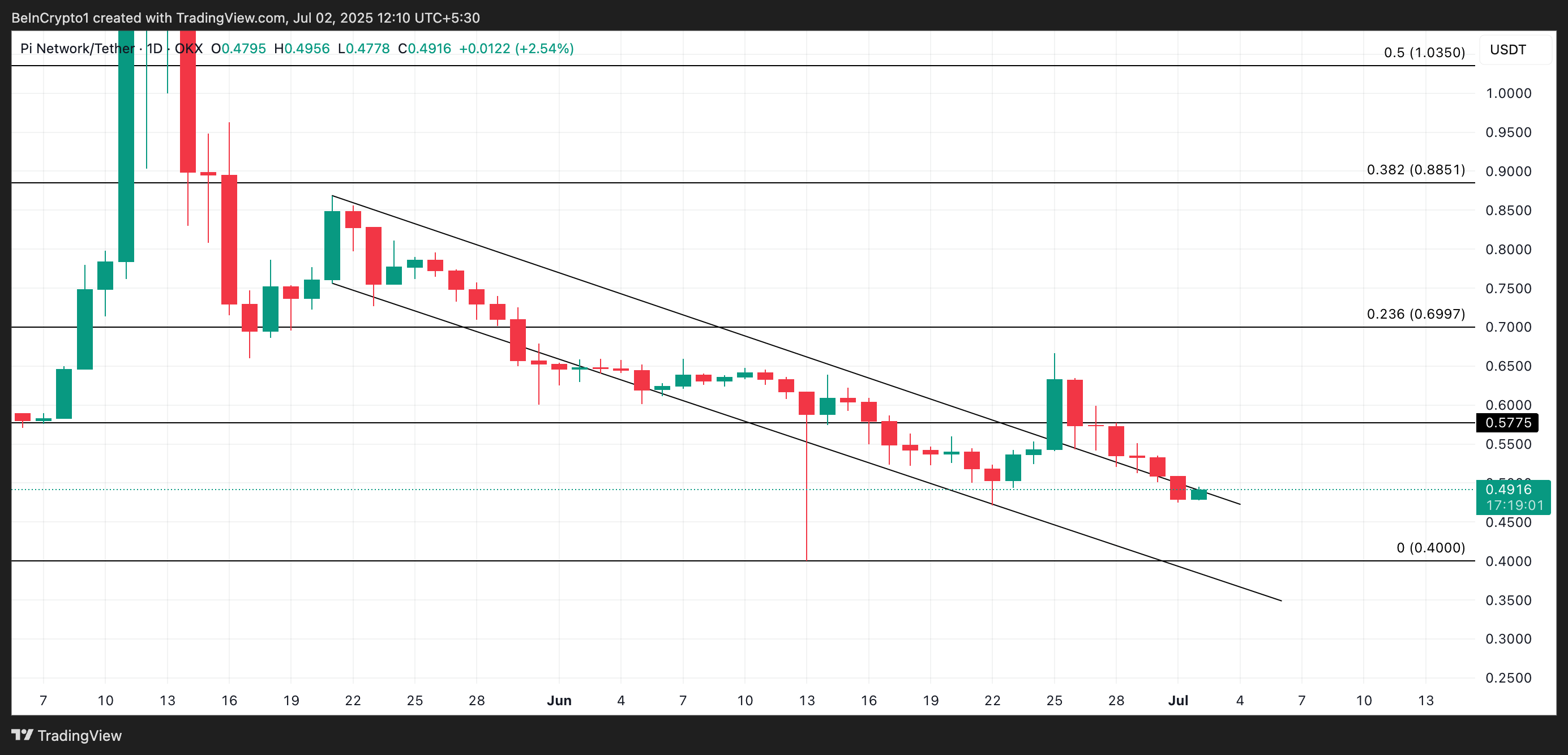-
PI’s price has dropped nearly 20% in the past week, with bearish pressure mounting due to a MACD crossover signaling deeper losses.
-
A significant token unlock event of 312 million PI tokens in the next month could exacerbate the price decline if demand doesn’t increase.
-
PI faces a critical level of support at $0.40, but a rebound could occur if new demand surfaces, targeting a move toward $0.57.
PI price falls nearly 20% amid bearish MACD crossover and a major token unlock event; critical support at $0.40 could determine next market direction.
Bearish Signals Mount for PI
The fresh bearish crossover on PI’s Moving Average Convergence Divergence (MACD) suggests the potential for deeper losses in the near term. This pattern emerges when an asset’s MACD line (blue) falls below its signal line (orange), indicating a breakdown in the market’s bullish structure.

The MACD indicator identifies trends and momentum in its price movement. It helps traders spot potential buy or sell signals through crossovers between the MACD and signal lines.
As is the case with PI, when the MACD line crosses below the signal line, it signals growing bearish momentum and fading buying strength. Traders interpret this setup as a sell signal. If selling activity accelerates as a result, it could intensify the downward pressure on PI’s price.
Furthermore, PI faces a significant token unlock event in the coming month. Data from PiScan shows that 312.29 million PI tokens, valued at $152 million at current prices, will be unlocked over the next 30 days.

This unlock presents a major challenge for the altcoin, especially given the already weak bullish sentiment surrounding PI. With buying interest in the market noticeably low, there is little assurance that the newly unlocked tokens will be absorbed by sufficient demand.
If demand fails to match the increase in circulating supply, the imbalance could trigger heightened sell pressure. In such a scenario, supply would overwhelmingly outpace demand, putting further downward pressure on PI’s price.
PI Slides Back Into Decline—Will Buyers Step In Before $0.40?
On the daily chart, PI has slipped back into its descending trendline. It had broken above this trendline on June 25, but the rally proved unsustainable as buying pressure quickly faded, sending the token back into its downtrend.
With bearish momentum continuing to build, PI risks revisiting its all-time low of $0.40.

However, if a surge in new demand emerges, it could help stabilize the price and invalidate the bearish outlook. In that case, PI could rebound and move toward the $0.57 resistance level.
Technical and Market Implications for Traders
Traders should closely monitor the MACD crossover and volume trends as key indicators of PI’s short-term trajectory. The token unlock event adds an additional layer of risk, potentially increasing volatility as new supply enters the market.
Strategic entry points may emerge near the $0.40 support level, but caution is warranted given the prevailing bearish momentum. Risk management strategies, including stop-loss orders, could help mitigate potential losses during this uncertain period.
On-Chain Data Reflects Market Sentiment
On-chain analytics reveal a decline in active addresses and transaction volumes, signaling reduced engagement from the PI community. This decline in network activity often correlates with diminishing investor confidence, which may further pressure the token’s price.
Market participants should watch for any uptick in on-chain metrics as a potential early sign of renewed interest or accumulation, which could precede a price recovery.
Conclusion
PI’s recent price decline is underscored by a bearish MACD crossover and a looming token unlock event that threatens to increase selling pressure. The critical support level at $0.40 will be a decisive point for the altcoin’s near-term direction. While bearish momentum currently dominates, a rebound is possible if new demand materializes, potentially targeting $0.57. Traders and investors should remain vigilant, leveraging technical and on-chain data to navigate this volatile phase effectively.







